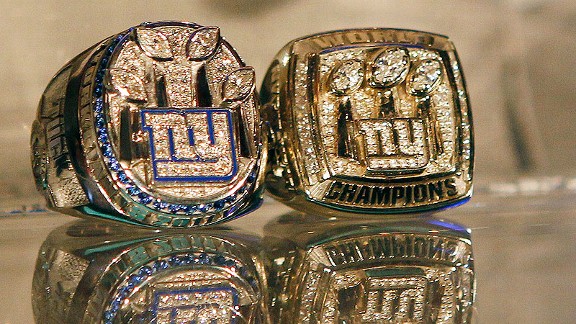The Boston Red Sox used an Apple Watch to steal pitching signs during baseball games, including against the New York Yankees, according to The New York Times. An investigation conducted by Major League Baseball determined that a member of the Red Sox training staff used the smartwatch to receive information that helped the team’s players decipher hand signals used by the opposing team’s catcher, who is in charge of making (and signaling) the pitch selections for the pitcher.
The MLB commissioner’s office began the investigation two weeks ago after Brian Cashman, the Yankees’ general manager, reportedly filed an official complaint. Included in that complaint were multiple video clips showing the Red Sox trainer checking his Apple Watch and subsequently relaying information to his players during games against the Yankees. No penalties have been issued as of yet.
Sign stealing isn’t explicitly against the MLB’s rules, but it’s definitely frowned upon, and it has a long history in baseball. Its most organic form occurs when there’s a baserunner at second base. From that position, the player is lined up just behind the pitcher, and has a clear view of the signals that the catcher uses to call different pitch types (fastball, curveball, etc.) and location.
<aside id="17nBbz">
</aside>
Since recognizing a pitch is such a crucial part of hitting a baseball (or just as importantly, knowing when not to swing), that information can help improve a batter’s chances. And considering the best hitters in the game typically carry batting averages of around .300, meaning they only succeed about 30 percent of the time, every little bit helps.
What the Red Sox are being accused of here is not all that different from the way players and coaches have stolen signs for decades. And to be clear, the dramatic advancement of camera technology as well as the proliferation of video replays in the era of HD television have already made it easier (and more tempting) for teams to try to use information that’s right in front of their eyes.
To fight those urges, the MLB has tried to limit how accessible that information is during any particular game. Smartphones are banned, and while the league worked with Apple to bring iPad Pros into the dugout last year, they disabled the tablet’s internet capabilities. Coaches can’t use them to access real-time feeds of the game.
But Apple Watches are still allowed, and so the Red Sox used it to help shorten that chain of information. Instead of waiting for someone to physically relay information (either verbally or in written form) from a place where the team can monitor real-time video of the game, the trainer apparently received word about which signs meant what on his Apple Watch, likely through some kind of messaging app. He then told the players in anticipation that, should they wind up on second base, they’d be able to recognize the signs’ meanings.
What using an Apple Watch can’t solve for is how, even armed with that knowledge, the Red Sox players at second base were relaying that information to the batter in the moment. All I know is that, if they were also using AirPods, someone probably would’ve noticed.
The MLB commissioner’s office began the investigation two weeks ago after Brian Cashman, the Yankees’ general manager, reportedly filed an official complaint. Included in that complaint were multiple video clips showing the Red Sox trainer checking his Apple Watch and subsequently relaying information to his players during games against the Yankees. No penalties have been issued as of yet.
Sign stealing isn’t explicitly against the MLB’s rules, but it’s definitely frowned upon, and it has a long history in baseball. Its most organic form occurs when there’s a baserunner at second base. From that position, the player is lined up just behind the pitcher, and has a clear view of the signals that the catcher uses to call different pitch types (fastball, curveball, etc.) and location.
<aside id="17nBbz">
</aside>
Since recognizing a pitch is such a crucial part of hitting a baseball (or just as importantly, knowing when not to swing), that information can help improve a batter’s chances. And considering the best hitters in the game typically carry batting averages of around .300, meaning they only succeed about 30 percent of the time, every little bit helps.
What the Red Sox are being accused of here is not all that different from the way players and coaches have stolen signs for decades. And to be clear, the dramatic advancement of camera technology as well as the proliferation of video replays in the era of HD television have already made it easier (and more tempting) for teams to try to use information that’s right in front of their eyes.
To fight those urges, the MLB has tried to limit how accessible that information is during any particular game. Smartphones are banned, and while the league worked with Apple to bring iPad Pros into the dugout last year, they disabled the tablet’s internet capabilities. Coaches can’t use them to access real-time feeds of the game.
But Apple Watches are still allowed, and so the Red Sox used it to help shorten that chain of information. Instead of waiting for someone to physically relay information (either verbally or in written form) from a place where the team can monitor real-time video of the game, the trainer apparently received word about which signs meant what on his Apple Watch, likely through some kind of messaging app. He then told the players in anticipation that, should they wind up on second base, they’d be able to recognize the signs’ meanings.
What using an Apple Watch can’t solve for is how, even armed with that knowledge, the Red Sox players at second base were relaying that information to the batter in the moment. All I know is that, if they were also using AirPods, someone probably would’ve noticed.










